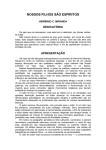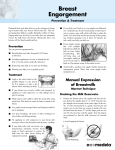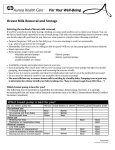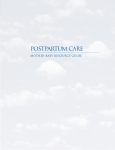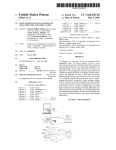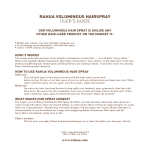Download PI-163 PI-163 - Breast-feeding: Breast Fullness and Engorgement
Transcript
PI-163 11100 Euclid Avenue • Cleveland, Ohio 44106-5000 Produced by the Department of Nursing Resources PI-163 - Breast-feeding: Breast Fullness and Engorgement Breast fullness: Treatment for engorgement: • Is the normal result of increase in fluids, blood and breast milk in the breast as “milk increasing”. • Watch for feeding cues and feed your baby FREQUENTLY (8 to 12 times or more in 24 hours). • Usually occurs around 3 to 5 days after birth. • Baby is latched deeply onto the breast. • May cause the breasts to be firm, but breasts should be compressible and baby should be able to latch deeply to breast. • Will decrease as your breasts gradually regulate milk supply to match baby’s needs. Breast engorgement: • • • Results from the increase in fluids and blood in the breast as well as milk remaining in the breast (incorrect latch, infrequent feedings, not expressing breast milk if baby does not drain breast, or not allowing baby time to drain breast). Results in breasts being hard and swollen, with tight, shiny skin. You may have mild to severe pain in your breasts and may also, have a fever. May cause your baby to struggle to latch or may be unable to latch onto the breast. File Under Breast-feeding PI-163 (06/92; Revised 06/94, 09/95, 06/96, 06/98, 06/02, 03/07, 08/10, 07/13) University Hospitals © SMOG / 3 pgs. PI-163 8Breast-feeding: Engorgement 07/13 Page 1 of 3 Submitted by: Libby Svoboda • Massage the breast during feeding to help drain the breast (see Figure 1 Manual Massage). • Remove your bra if tight as this may restrict the flow of breast milk. • Take an anti-inflammatory medication such as Advil or Ibuprofen (as directed by physician) to help reduce swelling or for pain relief. • Use cold compresses on the breast after feeding for comfort. • If your baby is having problems latching onto the breast, try the following to soften the breast and nipple before latching baby; 1. “Reverse Pressure technique” (see Figure 3a and 3b Reverse Pressure). 2. Hand Expression (see Figure 1 & 2 Manual Massage and Expression). 3. Use breast pump only if reverse pressure and expression by hand does not relieve breast engorgement or if your baby is unable to latch onto the breast. Call your lactation consultant or healthcare provider. (Continued) Figure 1: Manual Massage Cup your breast with both hands and gently massage from the base of the breast to the areola. Do this several times. Figure 2: Manual Expression Lift your breast and compress between your thumb and fingers, drawing gently forward to express a few drops of milk. Repeat this movement at several points all the way around the areola to reach the other milk sacs. PI-163 Breast-feeding: Engorgement 07/13 Page 2 of 3 Figure 3: Two handed, two step method Using straight thumbs, base of thumb, move ¼ turn.Repeat nail even with side of nipple.Repeat above & below nipple. Drawn by Kyle Cotterman. For help with breast feeding, call: University MacDonald Lactation Center East: 216-595-5354 West: 440-250-2035 References: Lawrence, Ruth A. & Lawrence, Robert M. “Breastfeeding, A Guide for the Medical Professional,” 7th edition, Mosby Inc., 2011 Riordan, Jan & Wambach, Karen “Breastfeeding and Human Lactation,” 4th edition, Jones & Bartlett, 2010 PI-163 Breast-feeding: Engorgement 07/13 Page 3 of 3



